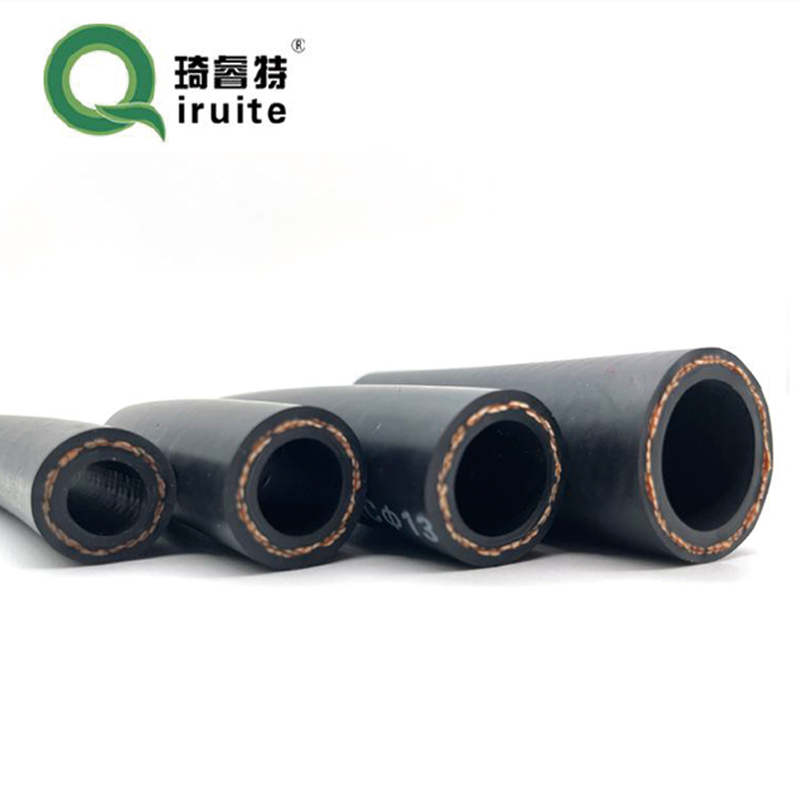Hydraulic Hose Solutions for Efficient Power Steering Systems in Vehicles
Understanding Power Steering Hydraulic Hoses
Power steering is a vital component in modern vehicles, allowing for easier steering and better handling. Central to the efficiency of power steering systems are hydraulic hoses, which are responsible for delivering the essential hydraulic fluid that aids in transmitting power from the steering pump to the steering gear. In this article, we will delve into the function, construction, and importance of power steering hydraulic hoses in automotive systems.
At its core, the power steering mechanism relies on hydraulic force. When a driver turns the steering wheel, the power steering pump—which is typically driven by a belt connected to the engine—pressurizes hydraulic fluid. This fluid travels through a series of hoses to the steering gear, helping to turn the wheels with minimal effort. The hydraulic hoses, specifically designed for this purpose, play an integral role in maintaining the efficiency of this system.
The construction of power steering hydraulic hoses is crucial for their performance and longevity. These hoses are usually made from reinforced rubber or synthetic materials, which offer flexibility and resistance to wear and tear. They are designed to withstand high pressure, as hydraulic systems can operate under significant stresses. The interior of the hose is lined with materials that prevent degradation from hydraulic fluid and protect against leaks—one of the most common issues that can arise in a power steering system.
A vital aspect of hydraulic hoses is their ability to handle temperature fluctuations. Power steering systems can generate considerable heat due to the engine's operation and the continual circulation of hydraulic fluid. Therefore, the hoses must not only be resilient against pressure but also capable of withstanding high temperatures without losing their structural integrity. Manufacturers often conduct rigorous testing to ensure that these hoses meet industry standards and can perform optimally under various conditions.
power steering hydraulic hose

Over time, however, power steering hydraulic hoses can wear out due to factors such as exposure to heat, pressure, and road debris. Signs of a failing hose can include fluid leaks, which can lead to decreased power steering performance, making it harder to steer the vehicle. Drivers might notice a squealing noise when turning the wheel or uneven steering responses. If any of these symptoms occur, it is essential to inspect and replace the hydraulic hoses promptly to avoid further damage to the steering system.
Maintenance of the power steering system, including its hydraulic hoses, is crucial for vehicle safety and performance. Regular checks can identify issues before they lead to major failures. It is advisable to inspect the hoses for any signs of wear, such as cracks, bulges, or leaks. If you notice any of these symptoms, it is best to consult a qualified mechanic to assess the situation and recommend appropriate solutions.
Replacing worn or damaged hydraulic hoses is vital for maintaining the integrity of the power steering system. This is a task that should ideally be performed by professionals, as it involves draining the hydraulic fluid, removing old hoses, and ensuring proper installation of new hoses to prevent future leaks or hydraulic pressure loss.
In conclusion, power steering hydraulic hoses are essential components that facilitate the smooth operation of a vehicle’s steering system. They must be constructed from durable materials to withstand high pressures and temperatures associated with hydraulic steering mechanisms. Regular inspection and maintenance are crucial in ensuring these hoses remain in good condition, thus safeguarding the overall performance of the power steering system. By understanding the importance of these hoses, vehicle owners can take proactive steps to ensure their cars remain safe and responsive on the road.
-
Ultimate Spiral Protection for Hoses & CablesNewsJun.26,2025
-
The Ultimate Quick-Connect Solutions for Every NeedNewsJun.26,2025
-
SAE J1401 Brake Hose: Reliable Choice for Safe BrakingNewsJun.26,2025
-
Reliable J2064 A/C Hoses for Real-World Cooling NeedsNewsJun.26,2025
-
Heavy-Duty Sewer Jetting Hoses Built to LastNewsJun.26,2025
-
Fix Power Steering Tube Leaks Fast – Durable & Affordable SolutionNewsJun.26,2025

